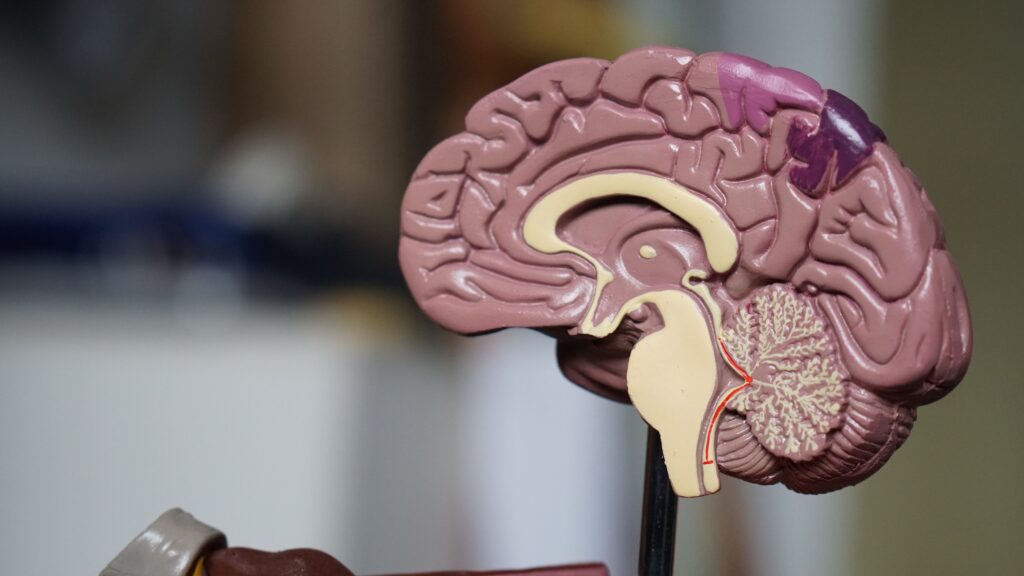Table Of Contents
10 Things You Should Know About Thought Loops
Have you ever been stuck in a never-ending loop of negative thoughts? Our own experiences in life can be marred by being stuck in unfortunate thought loops.
As a Neurodivergent lesbian, I’ve experienced firsthand how thought loops can trap us in cycles of repetitive and unproductive thinking. No matter your own background, you likely have suffered from a thought loop like this!
It’s my passion as a therapist to help folx with controlling their own thoughts loops and getting back into the pilot’s seat! Here are some important things to know about thought loops to begin your journey in helping get them under control:
1. What’s are Thought Loops?
As I mentioned above, thought loops are streams of thoughts that can trap us in cycles of repetitive and unproductive thinking. These loops often manifest as limiting beliefs, negative self-talk, or recurring thought patterns that can stifle personal growth and problem-solving.

For me, thought loops sometimes stem from the unique challenges I face in understanding and navigating a world that often feels overwhelming and unaccommodating.
Thought loops are particularly frustrating because they create mental barriers that can make it difficult to move forward. They are like mental ruts that keep us circling the same issues without making meaningful progress.
This repetitive thinking can be especially hard to break free from when compounded by the stresses of living in a society that doesn’t always understand or support Neurodivergent and LGBTQ+ experiences.
By becoming aware of these thought loops and actively working to change them through self-reflection and deliberate action, I’ve found that it’s possible to break free from these unproductive cycles.
This process involves recognizing the patterns, understanding their impact on my life, and taking conscious steps to shift my thinking.
It’s not easy, but with persistence and support, it’s possible to open up new possibilities for learning and growth, and to create a life that is more fulfilling and aligned with my true self.
2. Is a Repetitive Thought the Same as a Thought Loop?
Now we get to repetitive thoughts. A repetitive thought and a thought loop share similarities but are not exactly the same.
Repetitive thought refers to the process of repeatedly thinking about the same topic, concern, or experience over and over again. This can involve a range of thoughts, including worries, rumination, reflections, and problem-solving attempts.
Repetitive thoughts happen when the same topic, concern, or experience keeps coming back to mind over and over again. These thoughts can include worries, reflections, attempts to solve problems, or other mental activities focused on one subject.
Stress, anxiety, trauma, or unresolved issues often trigger these repetitive thoughts.
These thoughts can be both helpful and harmful. On the positive side, they can help with planning, preparing for future events, recovering from trauma, and adopting healthy behaviors.
On the negative side, they can lead to depression, anxiety, and even physical health problems.
Thought Loops vs Repetitive Thoughts
On the other hand, a thought loop typically refers to a specific type of repetitive thought pattern where the same thoughts or ideas cycle through a person’s mind continuously, often without resolution or progress.
Thought loops can be more rigid and fixed, causing individuals to feel stuck in a repetitive pattern of thinking without being able to break free from it. Thought loops are commonly associated with conditions like anxiety, obsessive-compulsive disorder (OCD), and rumination.
In summary, while repetitive thoughts encompass a broader range of repetitive thinking patterns, thought loops specifically refer to a more rigid and cyclical form of repetitive thought that can be particularly challenging to disengage from.
An understanding of repetitive thoughts is important for mental health because they play a big role in shaping our emotions, behaviors, and overall well-being.
For those who are Neurodivergent or part of the LGBTQ+ community, recognizing and managing these thought patterns is key to leading a healthier, more balanced life.

3. Rumination’s Impact on Thought Loops
This brings us to another type of pattern thinking – rumination. Rumination plays a major role in creating and sustaining thought loops, which are repetitive and persistent patterns of thinking.
Rumination involves being fixated on a particular problem or concern, leading to a narrow focus on the negative aspects. This fixation creates a loop where the person keeps revisiting the same negative thoughts without finding a way out.
Rumination can enhance the intensity, fixation, and reinforcement of negative thoughts, making it harder to break free from thought loops.
Addressing rumination with cognitive-behavioral therapy, mindfulness techniques, and other therapeutic approaches can help individuals disrupt these loops and develop healthier thinking patterns.
Rumination Affecting Thought Loops
Rumination can significantly impact thought loops by reinforcing and perpetuating repetitive patterns of negative thinking. It involves repetitively thinking about negative experiences, emotions, or problems without reaching a resolution.
This heightened focus on negative content can amplify and prolong thought loops centered around self-criticism, worry, or regret. Engaging in rumination can overwhelm cognitive resources and lead to a cycle of overthinking.
This cognitive overload can make it challenging to break free from thought loops as the mind becomes preoccupied with repetitive and unproductive thoughts.
Rumination tends to magnify perceived problems or difficulties, making them appear larger and more insurmountable than they may actually be. This magnification can fuel thought loops that reinforce a sense of helplessness or hopelessness.
It often involves replaying past events or conversations without finding a resolution or closure. This lack of closure can contribute to ongoing thought loops as the mind continues to revisit the same issues without progress.
Rumination is associated with negative emotional states such as sadness, anxiety, or frustration. These emotions can feed into thought loops, creating a cycle where negative thoughts trigger negative emotions, which in turn reinforce negative thinking patterns.
Constant rumination can interfere with effective problem-solving by keeping individuals stuck in repetitive thought patterns rather than actively seeking solutions or alternatives. This interference can perpetuate thought loops that hinder progress and decision-making.
4. Thought Loops Impacting Mental and Physical Health
Persistent thought loops can contribute to mental health issues like anxiety, depression, and obsessive-compulsive disorder (OCD), as they often reinforce negative thinking patterns.
Chronic thought loops can also affect physical health by contributing to insomnia, increased stress levels, and weakened immune function.
Thought loops can have significant impacts on an individual’s mental and physical health. Cognitive rigidity refers to a pattern of repetitive and inflexible thinking, where individuals may get stuck in repetitive thoughts or behaviors without being able to adapt or change their responses appropriately.
Thought loops can lead to heightened stress and anxiety as individuals may constantly ruminate on the same thoughts or worries without finding resolution.

This chronic state of stress can have detrimental effects on mental well-being and may contribute to the development or exacerbation of anxiety disorders. Cognitive rigidity can limit a person’s ability to consider alternative perspectives or solutions, leading to difficulties in decision-making.
This can result in feelings of being stuck or overwhelmed, impacting one’s sense of control and self-efficacy.
Thought loops can interfere with communication and interpersonal relationships. When individuals are caught in repetitive patterns of thinking, they may struggle to engage in meaningful and effective interactions with others.
This can lead to misunderstandings, conflict, and strained relationships, further impacting mental health and overall well-being.
5. Cognitive Rigidity in Thought Loops
Thought loops can lead to another phenomenon known as cognitive rigidity, making it difficult for individuals to think flexibly or consider alternative perspectives and solutions. Cognitive rigidity means having inflexible thinking patterns and struggling to adapt to new information or situations.
People with cognitive rigidity often strictly follow their existing beliefs or routines and don’t consider other viewpoints. This inflexibility can make it hard for them to come up with creative solutions or adjust to new challenges.
They tend to prefer keeping things the same, even when there are good reasons to change, and they see things in black-and-white terms without recognizing the complexities.
Additionally, cognitive rigidity leads to a narrow perspective, making it difficult to see beyond personal biases.
This rigidity is often accompanied by strong emotional reactions when beliefs are challenged, and it can impede learning and personal growth by preventing the acceptance of new information that contradicts existing beliefs.
To address cognitive rigidity, it’s important to develop cognitive flexibility. This involves changing thinking patterns, considering different perspectives, and approaching problems with an open mind.
Techniques like mindfulness, cognitive restructuring, and exposure to new experiences can help improve adaptability and problem-solving skills.

6. Emotional Amplification in Thought Loops
Engaging in thought loops can amplify negative emotions, making individuals feel more anxious, sad, or stressed. Emotional amplification refers to the process where an individual’s emotional responses become more intense than what might be considered proportionate to a situation.
Factors contributing to this can include cognitive biases, past experiences, personality traits, and situational context.
For instance, individuals prone to negative thinking may amplify their anxiety in response to minor stressors. Similarly, someone with a history of trauma may experience heightened emotional reactions in situations that remind them of past events.
This amplification can impact perception and behavior, influencing decision-making and overall well-being, and potentially maintaining mental health conditions like anxiety or mood disorders.
Emotional amplification can start with a triggering event, followed by cognitive appraisal where individuals interpret the event based on their beliefs and past experiences. Rumination, or repetitive thinking about the event, can further intensify these emotions.
Physiological responses, such as the release of stress hormones, also play a role in this process. Social influences, such as interactions with others who validate or escalate emotions, and high-stress environments, can contribute to emotional amplification.
Understanding and managing emotional amplification through techniques like cognitive restructuring, mindfulness, and emotion regulation strategies can help individuals regulate their emotional responses and promote well-being.
This involves recognizing the triggers, engaging in healthier thinking patterns, and developing skills to manage intense emotions effectively.
7. What Triggers a Thought Loop?
They can be triggered by stress, anxiety, trauma, or unresolved issues, and can be related to various aspects of life, such as relationships, work, or personal beliefs. Thought loops can be set off by a range of factors, including:
Negative Self-Talk
Engaging in self-critical or self-defeating thoughts can create a loop of negativity, reinforcing unproductive thinking patterns. Example: A Neurodivergent lesbian might think, “I’m too different for anyone to truly accept me,” leading to persistent feelings of isolation and low self-worth.
Stress and Anxiety
High levels of stress or anxiety can lead to repetitive and circular thoughts as the mind struggles to find solutions or cope with the situation. Example: Stress from trying to mask Neurodivergent traits in social settings might cause thoughts like, “What if they notice I’m not neurotypical?” creating a loop of anxiety about fitting in.
Fear or Failure
The fear of making mistakes or failing can trigger thought loops focused on worst-case scenarios or self-doubt. Example: Worrying about being judged for coming out as a lesbian might result in thoughts like, “What if my friends reject me?” leading to a paralyzing fear of taking action.
Rumination
Continuously dwelling on past events, mistakes, or regrets can result in a thought loop that prevents individuals from moving forward. Example: Reflecting on a past relationship where they felt misunderstood due to their Neurodivergent traits can lead to persistent thoughts like, “If only I had acted differently, things might have worked out.”
Lack of Clarity
Uncertainty or ambiguity about a situation can lead to repetitive thoughts as the mind tries to make sense of the information available.
Example: Uncertainty about how to balance their Neurodivergent needs with a partner’s expectations might cause thoughts like, “How can I explain my needs without causing conflict?” creating a cycle of worry and indecision.
Perfectionism
Striving for perfection and setting unrealistically high standards can create a loop of self-criticism and dissatisfaction with one’s performance.
Example: Trying to be the perfect partner in a relationship despite sensory overload might result in thoughts like, “I should be able to handle this better,” leading to constant self-criticism and exhaustion.
By identifying what triggers these thought loops, individuals can become more aware of their thought patterns and work towards breaking free from unproductive cycles through self-reflection, cognitive restructuring, and intentional behavior change.
8. How do I Become More Aware of Thought Loops?
Recognizing and managing thought loops involves increasing awareness of your thought patterns and emotions. Self-reflection is a key strategy, where spending time thinking about your emotions, thoughts, and reactions in various situations can be highly beneficial.

Keeping a journal can help track and understand your emotional responses.
Engaging in mindfulness practices like meditation, deep breathing, or yoga helps you stay present and become more aware of your emotions.
Seeking feedback from trusted friends, family members, or a therapist about your emotional expressions and responses can provide valuable insights.
Learning and practicing emotion regulation techniques, such as deep breathing, muscle relaxation, or cognitive reframing, is crucial for managing strong emotions effectively.
Other Strategies
Empathy building is another important aspect, where trying to understand and share the feelings of others can help you recognize and empathize with different emotional experiences.
Participating in workshops or courses focused on emotional intelligence can significantly improve your skills in recognizing, understanding, and managing emotions.
If increasing your emotional awareness is difficult on your own, seeking support from a mental health professional can provide the guidance and tools you need.
Integrating these strategies into your daily life can enhance your emotional awareness and provide a better understanding of your own emotions and those of others.
These approaches foster a greater sense of self-awareness and emotional clarity, which are essential for breaking free from thought loops and developing more adaptive and positive mental habits. Through mindfulness, empathy, and professional support, individuals can cultivate a deeper connection with their emotional landscape, leading to improved mental health and well-being.
9. How do I Break the Cycle?
Techniques such as mindfulness, cognitive-behavioral therapy (CBT), and thought-stopping exercises can help individuals break free from thought loops and develop healthier thinking patterns.
Breaking a thought loop involves using strategies to stop repetitive thinking and focus on more positive or productive thoughts.
Here are some techniques to help with this:
Mindfulness and Grounding Techniques
- Focused Breathing: Deep breathing exercises can help you calm your mind and focus on the present moment.
- Body Scan: Pay attention to sensations in different parts of your body to stay grounded in the present.
- 5-4-3-2-1 Grounding: Identify and name five things you can see, four things you can touch, three things you can hear, two things you can smell, and one thing you can taste. This technique helps shift your focus away from intrusive thoughts.
Cognitive Restructuring
- Challenge Negative Thoughts: Question whether negative thoughts are true and replace them with more balanced or positive ones.
- Reality Testing: Look at the evidence for and against your repetitive thoughts to get a more accurate view of the situation.
Behavioral Strategies
- Engage in Physical Activity: Exercise or other physical activities can distract your mind and improve your mood through the release of endorphins.
- Change Your Environment: Move to a different place or start a new activity to break the cycle of repetitive thinking.
Mind-Wandering Interruption
- Engage in a Task: Focus on tasks that require concentration, like solving a puzzle, reading, or working on a hobby.
- Practice Visualization: Imagine a peaceful place or scenario to calm your mind and shift focus from repetitive thoughts.
Self-Compassion and Acceptance
- Practice Self-Compassion: Be kind to yourself and recognize that everyone experiences repetitive thoughts. Treat yourself with understanding and compassion.
- Acceptance: Acknowledge your repetitive thoughts without judging them or trying to fight them. Let the thoughts come and go without getting caught up in them.
Here’s an example of using one of these tools:
Neurodivergent lesbian might find herself stuck in a thought loop about not fitting into typical societal expectations. Using focused breathing or the 5-4-3-2-1 grounding technique can help her bring her attention back to the present moment. She might also challenge negative thoughts about her self-worth by questioning their validity and replacing them with affirmations of her unique strengths and contributions.
Another example could involve her feeling anxious about attending a social event. By engaging in a physical activity like going for a walk or changing her environment by visiting a favorite café, she can disrupt the anxiety loop.
Practicing self-compassion by acknowledging that it’s okay to feel nervous and accepting those feelings without judgment can also help her manage the thought loop.
By incorporating these strategies into daily life, individuals can gradually break free from unproductive thought patterns. Consistent practice and, if needed, seeking professional support can help address underlying issues contributing to thought loops.
10. How do I get Support if I’m Feeling Stuck in a Thought Loop?
Seeking support from mental health professionals, such as therapists or counselors, and sharing experiences with trusted friends or family can provide valuable perspectives and aid in overcoming thought loops.
If you’re feeling stuck in a thought loop, there are several resources and strategies that can help you navigate through this challenging experience:
| Therapy | Consider seeking support from a mental health professional, such as a therapist or counselor. Therapy provides a safe space to explore your thought patterns, gain insight into underlying issues, and learn coping strategies to break free from thought loops. |
| Support Groups | Joining a support group or community of individuals experiencing similar challenges can offer validation, understanding, and shared coping strategies. Connecting with others can help you feel less isolated and provide a sense of belonging. |
| Hotlines and Helplines | If you need immediate support, consider reaching out to mental health hotlines or helplines staffed by trained professionals who can offer crisis intervention, emotional support, and resources for further assistance. |
| Online Resources | Explore online resources, such as mental health websites, forums, and apps, that offer information, tools, and support for managing thought loops and improving mental well-being. These resources can provide self-help strategies and guidance. |
| Self-Help Books | Reading self-help books on topics like cognitive behavioral therapy, mindfulness, and emotional regulation can provide valuable insights and practical techniques for breaking thought loops and fostering positive mental habits. |
| Mindfulness Practices | Engage in mindfulness practices, such as meditation, deep breathing exercises, and body scans, to cultivate present-moment awareness and observe your thoughts without attachment. Mindfulness can help you disengage from thought loops and promote mental clarity. |
| Reach Out to Loved Ones | Talk to trusted friends, family members, or mentors about your experience with thought loops. Sharing your feelings and thoughts with supportive individuals can offer perspective, empathy, and emotional validation. |
| Physical Activity | Engage in physical activities like exercise, yoga, or walking to release pent-up energy, reduce stress, and improve your mood. Physical movement can help break the cycle of rumination and shift your focus away from negative thoughts. |
Remember, it’s okay to seek help and support when struggling with thought loops. Taking proactive steps to reach out for assistance can empower you to navigate challenging times and work towards breaking free from repetitive patterns of thinking.
Conclusion
Thought loops are a common experience for many people, but they can be particularly challenging for those who are Neurodivergent or part of the LGBTQ+ community.
By understanding the nature of thought loops and how they impact our mental and physical health, we can begin to develop strategies for breaking free from these patterns and fostering a more positive and adaptive mindset.
By recognizing the triggers of thought loops, challenging negative thoughts, and practicing mindfulness, it’s possible to disrupt these patterns and create space for more constructive thinking.
Seeking support from mental health professionals can also be beneficial in developing coping strategies and fostering a greater sense of self-awareness.
Breaking free from thought loops is a journey that requires patience, self-compassion, and a willingness to challenge our existing beliefs and behaviors.
By taking proactive steps to change our thinking patterns, we can cultivate a more balanced and resilient mindset that supports our overall well-being.

How I can Help You!
If you’re considering therapy as a viable option for you to break the thought loop cycle, I can help you with that. Welcome to a space of growth, healing, and understanding. I’m Paola, and I’m honored to be part of your journey towards a more fulfilling life!
As a Neurodivergent therapist (ADHD), I will provide an environment where we can both cultivate safety tailored to your specific needs. Together, we can build your own personalized path to peace. In our sessions, I combine principles from various therapies to create a healing experience specifically for you.
Our approach will be grounded in validation and empathy, recognizing that your experiences and challenges are entirely your own and deserve the utmost care and respect.
Whether you’re facing internalized ableism, struggling with authenticity, seeking personal growth, or feeling stuck in a thought loop, we can use practical tools to help you build the life you want. Remember, you’re not alone on this journey.
If you would like to learn more about my approach, feel free to read about me and my colleague here!
Together, we’ll navigate the challenges and celebrate your successes, empowering you to live a life that’s authentic and meaningful.
Contact Me Directly!
All inquiries are responded to within 1-3 business days from inquiry. Feel free to use my contact information to leave a message!
Hours: Monday-Thursday 12-7pm
Phone: (616) 259-0255
Email: info@michigancrs.com
Location: 1451 East Lansing Dr., Suite 219
East Lansing, MI 48823
References
Battista, F., Lanciano, T., Borrelli, P., & Curci, A. (2023). The Cognitive Cost of Repetitive Thinking: A Study on the Effects of Shifting and Updating on Rumination of Emotional Experiences. Brain Sciences, 13(15), 1569.
Lane, R. D., & Smith, R. (2021). Levels of Emotional Awareness: Theory and Measurement of a Socio-Emotional Skill. Journal of Intelligence, 9 (3), 42. https://doi.org/10.3390/jintelligence9030042
Ramakrishnan, S., Robbins, T. W., & Zmigrod, L. (2022). Cognitive Rigidity, Habitual Tendencies, and Obsessive-Compulsive Symptoms: Individual Differences and Compensatory Interactions. Frontiers in Psychiatry, 13, Article 865896. https://doi.org/10.3389/fpsyt.2022.865896
Staib Duffy, K. (2008). Breakdowns to breakthroughs: An ontological approach to thought loops and growth edges. VINE, 38(4), 422-430.
Watkins, E. R. (2008). Constructive and unconstructive repetitive thought. Psychological Bulletin, 134(2), 163–206.
